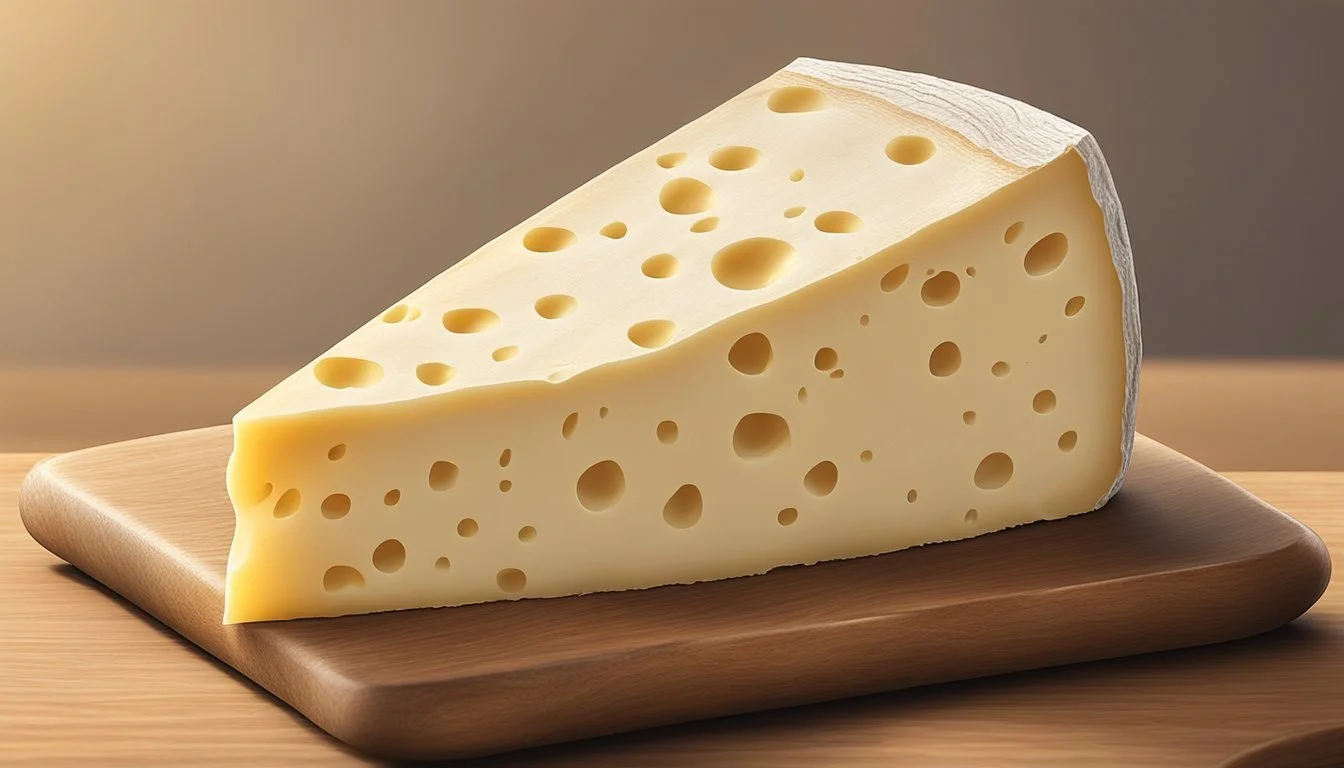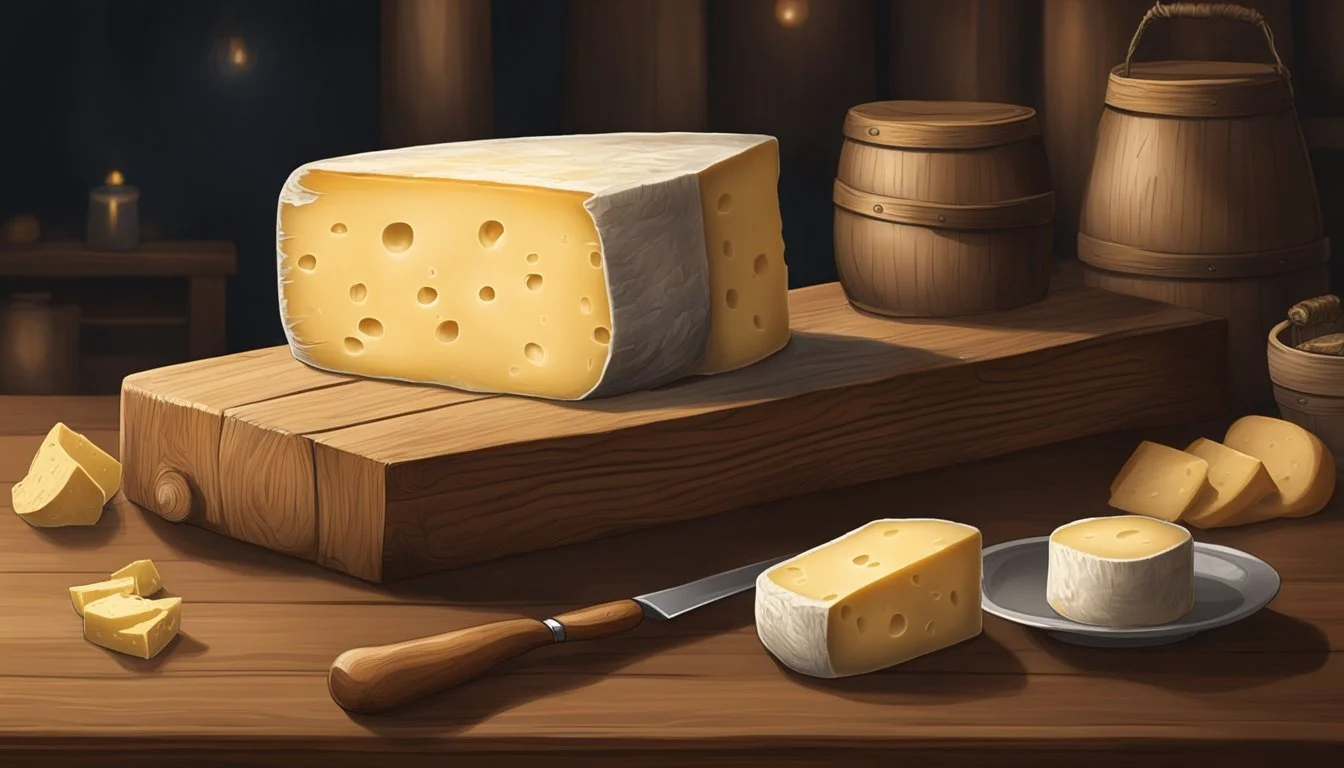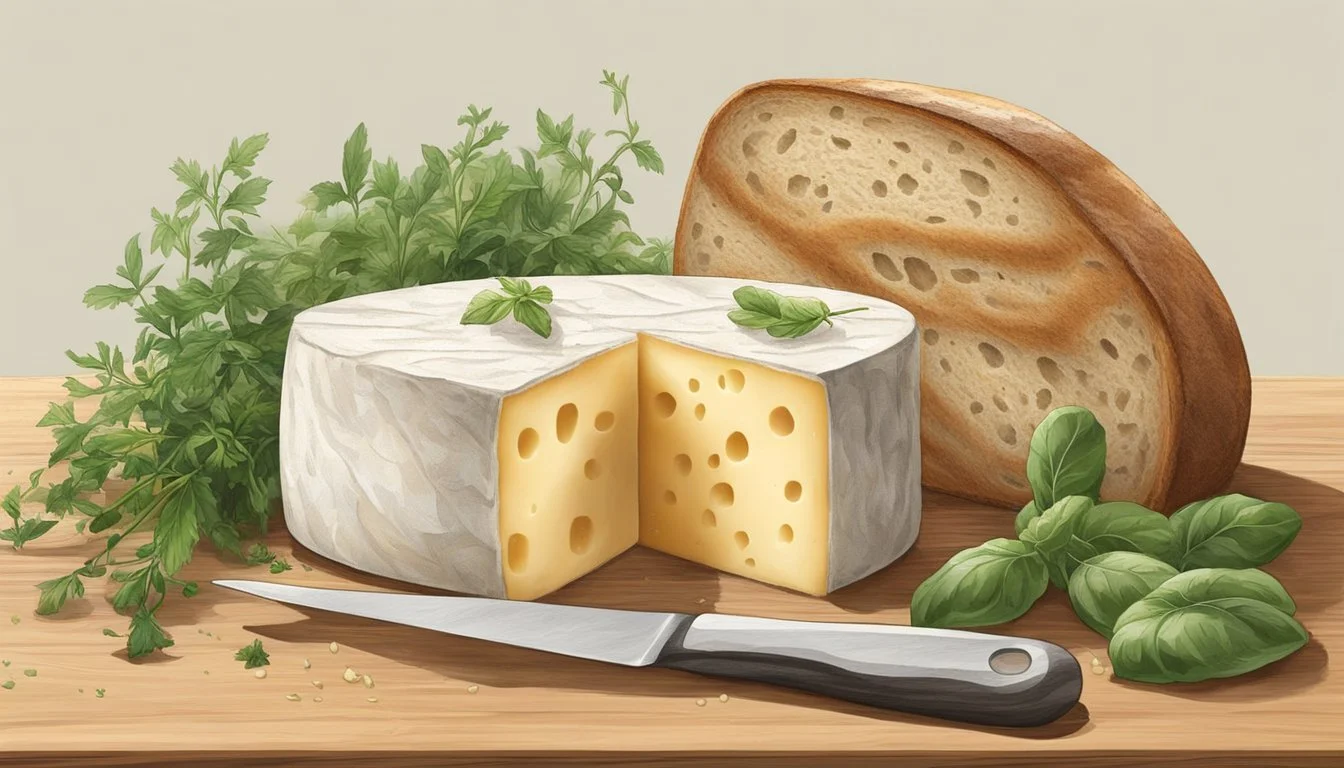How Long Does Taleggio Cheese Last?
Shelf Life and Storage Tips
Taleggio cheese (how long does cheese last?), a semi-soft, washed rind cheese (What wine goes well with cheese?) from Italy, boasts a long history dating back to the 10th century. Known for its pungent aroma and rich, buttery flavor, this cheese strikes a balance between the creaminess of softer cheeses and the firmness of harder varieties. Its unique character is developed through a process of aging and washing, creating a product enjoyed by cheese connoisseurs worldwide.
Understanding how long Taleggio lasts is essential for both retailers and consumers wanting to enjoy the cheese at its peak quality. Once opened, Taleggio's longevity depends heavily on storage conditions. Wrapped tightly in plastic or aluminum foil and kept in the refrigerator, Taleggio maintains its freshness. Proper storage not only extends its shelf life but also preserves the subtle complexities of its flavor profile.
Despite its robust nature, Taleggio is not immune to spoilage. The presence of mold on the rind is a natural part of its aging process, but the cheese inside should remain free of blue or excessive mold growth. Preservation techniques such as rigorous washing with special solutions during the aging process help control unwanted mold and encourage the growth of beneficial bacteria. The interplay of these factors ensures that when stored under optimal conditions, Taleggio can be savored at its best for a reasonable period after purchase.
Historical Background
Taleggio cheese boasts a rich tradition, reflecting its longstanding place in Italian cheese-making heritage and benefiting from protections that maintain its quality and authenticity.
Origin of Taleggio
Region: Val Taleggio, Northern Italy
Historical mentions: Cicero, Cato the Elder, Pliny the Elder
Chronology: Since Roman times
Taleggio's roots are in the picturesque Val Taleggio of Lombardy, Italy, a region known for its cheese-making since Roman times. Esteemed figures like Cicero, Cato the Elder, and Pliny the Elder have written about this cheese, revealing its deep historical significance. It wasn’t until the late 19th century that production expanded beyond Val Taleggio into other parts of Lombardy, such as Bergamo, Brescia, Como, Cremona, Lecco, Lodi, Milan, and Pavia.
Protected Designation of Origin
PDO Status: Granted in 1996
Geographical Area: Specific parts of Lombardy and Piedmont
PDO Parameters: Precisely defined region, cheese characteristics, and production methods
The European Union granted Taleggio the prestigious Protected Designation of Origin (PDO) status in 1996, underlining its unique qualities that stem from a specific geographical area. This status limits Taleggio production to precise provinces: within Lombardy (Bergamo, Brescia, Como, Cremona, Lecco, Lodi, Milan, and Pavia) and some areas of Piedmont, which include Novara and part of Treviso. The PDO certification ensures that each wheel of Taleggio is produced according to strict guidelines, preserving this Italian cheese's traditional methods and regional heritage.
Nutritional Information
Taleggio cheese offers a distinct nutritional profile, with a notable amount of fat and protein, along with calcium and energy value. Consumers can find substantial nutritional benefits when Taleggio is incorporated sensibly into their diets.
Fat and Protein Content
Taleggio cheese contains approximately 25 grams of fat per 100-gram serving, which primarily consists of monounsaturated fats. These fats are beneficial for reducing cholesterol levels and decreasing the risk of heart disease. Taleggio also provides a meaningful amount of protein, essential for muscle repair and enzyme functions in the body.
Calcium and Energy Values
A 100-gram serving of Taleggio cheese provides a significant energy value due to its caloric content and nutrients. It also contributes a valuable source of calcium which is crucial for bone health and other bodily functions. Exact calcium and calorie values can vary slightly based on the specific product and producer.
Cheese Characteristics
Taleggio cheese is renowned for its rich sensory profile which includes a range of aromas, flavors, and textures. This section provides a detailed look into these characteristics, offering insights into what makes Taleggio a distinctive choice.
Aroma and Flavor Profile
Taleggio cheese emits a pungent aroma, which is a result of the wash-rind technique used during maturation. Its flavor is a complex balance. Initially, it tastes mild and buttery, but as the cheese matures, it develops a more pronounced tangy and slightly acidic taste. Subtle nutty notes may also be present, delivering a multi-layered flavor experience.
Texture and Rind
The texture of Taleggio changes from semi-soft to creamy as it ages. Its rind is notable for its rough texture and edible quality. The rind's appearance contrasts with the interior thanks to the cheese's maturation process and brine washes. This wash not only affects the aroma but also contributes to the rind's distinctive texture.
Color Variations
The inside of Taleggio cheese showcases a pale yellow hue. The rind, on the other hand, may vary in color, exhibiting shades ranging from pale pink to intense orange, occasionally marked with grey and green molds. These color variations complement the Taleggio's overall sensory profile.
Production Process
Taleggio cheese production embraces a time-honored methodology that transforms high-quality milk into a distinct soft cheese. Each step in the process is integral to the final product's flavor, texture, and aroma.
Milk Selection and Pasteurization
The production of Taleggio begins with selecting cow's milk, which can be either pasteurized or unpasteurized. Pasteurization is a key step that ensures safety and consistency in the cheese.
Rennet and Curdling
To coagulate the milk, producers add animal rennet or, in some cases, a vegetarian substitute. This action separates the solid curd from the liquid whey, forming the basis of the cheese.
Salting and Aging
Next, the curd is salted to enhance flavor and preservation. The aging process begins as the cheese is placed on wooden shelves and periodically turned for even maturation.
Ripening and Storage
For a characteristic savor, cheeses are stored at specific temperatures and humidity levels, sometimes in caves. They are often washed with a brine solution to promote the desired rind and taste.
Culinary Uses
Taleggio cheese is celebrated for its versatility in the kitchen, enhancing traditional recipes and creating harmonious pairings with various foods and wines.
Traditional Recipes
In Italian cuisine, Taleggio plays a pivotal role in diverse recipes. Its creamy texture and rich flavor make it ideal for melting over dishes like risotto and polenta, where it imbues a depth of flavor that is distinct yet not overpowering. Additionally, it's commonly used in baking, allowing its flavor to permeate through bread and pastry recipes. Incorporating Taleggio into pasta dishes is another customary use, and it shines particularly when melted into a comforting cheese sauce or as a sumptuous layer in lasagnas and similar bakes.
Common Pairings and Substitutes
Taleggio's fruity and tangy notes find companions in a myriad of pairings. It pairs well with fruits like figs and pears, nuts, and is often enjoyed with a glass of wine, which complements its strong character. For a fulfilling meal, adding Taleggio to salads or pizzas brings a gourmet touch.
For substitutions, those might want to consider cheeses with a similar texture and melting properties. Brie and fontina are excellent substitutes that offer a similar creamy mouthfeel. For a cheese with a greater bite, gruyère or cheddar can be used, although the flavor profile will change. If the recipe requires a cheese that doesn't overpower other ingredients, mozzarella serves as a milder option.
Cheese Care
Proper storage and observation of spoilage signs are crucial to extend the longevity of Taleggio cheese, ensuring that its distinctive flavor and texture can be enjoyed up to its optimal potential.
Optimal Storage Methods
To maintain the quality of Taleggio cheese, it should be stored at a cold temperature, ideally within a refrigerator at around 4°C (39°F). Wrapping the cheese in parchment paper before loosely covering it with plastic wrap allows it to breathe while retaining its moisture. Cheese paper is also a good alternative to preserve Taleggio, as it prevents the cheese from drying out or absorbing other flavors from the fridge. For the best results, the cheese should be kept in the least cold part of the refrigerator, commonly the vegetable or cheese drawer, which offers a consistent temperature with moderate humidity.
Wrap: Parchment paper, then plastic wrap (loose)
Refrigerator Temperature: Approximately 4°C (39°F)
Location: Vegetable or cheese drawer
Shelf Life and Spoilage Signs
A fresh piece of Taleggio cheese can last for about 6 to 8 weeks when stored correctly. As the cheese matures, it is normal for the rind to develop some surface mold; this is common for washed-rind cheeses and can be simply wiped or trimmed away. However, the presence of uncommon mold colors, such as green or black, or an off-putting smell signifies spoilage. It is important to inspect the cheese regularly and discard it if the cheese emits an ammonia-like odor or if the mold is pervasive and not just superficial. Cheese should never be left out at room temperature for extended periods; this accelerates the growth of spoilage bacteria and mold.
Shelf Life: 6 to 8 weeks (refrigerated)
Normal Mold: Surface mold on rind, can be wiped away
Spoilage Signs: Green or black mold, ammonia-like odor
Maintaining these storage conditions and being vigilant for spoilage are key for the optimal enjoyment of Taleggio cheese.
Types and Variations
The diversity of Taleggio cheese stems from its production techniques, specifically whether it is pasteurized or unpasteurized, as well as the duration and conditions under which it is aged. These factors contribute significantly to the flavor and texture profiles of the cheese.
Pasteurized vs. Unpasteurized Taleggio
Pasteurized Taleggio: This variety is made from milk that has been heat-treated to kill bacteria. The pasteurization process ensures a consistent and safer product, reducing the risk of pathogens.
Unpasteurized Taleggio: Conversely, unpasteurized Taleggio is crafted from raw milk, which may retain more of the original flavors and complexities from the milk's natural bacteria. However, it also carries a risk of harmful bacteria and is typically subject to aging requirements to ensure safety.
Aging Variations
Taleggio cheese is a washed-rind and smear-ripened cheese, with its aging process being crucial to its development:
Young Taleggio: At a minimum aging time of 25 days, young Taleggio tends to have a milder flavor and softer texture.
Aged Taleggio: As the cheese ages, it may be washed with a saline solution to prevent overgrowth of mold and to promote the growth of beneficial bacteria on the rind, enhancing its complex flavors and pungent characteristics. The aging process can extend up to several months, during which the cheese develops a stronger aroma and a firmer texture.
Health and Dietary Considerations
When considering Taleggio cheese in one’s diet, it is important to be aware of its lactose content, potential allergens, and the additives it may contain. These factors can impact individuals with specific dietary restrictions or health concerns.
Lactose Content
Taleggio cheese, like many aged cheeses, contains lower levels of lactose due to the maturation process, which may make it more tolerable for individuals with mild lactose intolerance. However, those with a more severe intolerance should be cautious and consult with a healthcare professional.
Allergens and Additives
Allergens: Taleggio cheese is a dairy product and contains milk proteins which can be allergenic to individuals with dairy allergies. It is important to avoid Taleggio if one has a known allergy to cow's milk.
Additives: While traditional Taleggio cheese is made with minimal additives, some commercial versions may include additives to prolong shelf life. Consumers should check the label for:
Preservatives
Artificial flavors
Colorants
Nutritional Profile:
Fat: Taleggio is rich in fats, with some of these being monounsaturated fats, which are considered beneficial in moderation.
Protein: It provides a good source of protein, essential for various bodily functions.
Calcium: Taleggio also contributes to calcium intake, which is vital for bone health.
Regulatory Standards
In the context of Taleggio cheese, regulatory standards ensure quality and compliance, particularly within the European Union, and mandate proper labeling for consumer awareness.
EU Compliance
The European Union (EU) has a well-established framework for food safety and quality, including strict regulations for dairy products like Taleggio cheese. Taleggio is a Protected Designation of Origin (PDO) product, which requires adherence to specific production methods and geographical sourcing to maintain its status. The EU requires producers of Taleggio cheese to comply with particular production standards that include aspects such as the cheese aging process, ingredient sourcing, and maintaining the microbial standards.
Key Regulations:
Geographic origin must be from the designated area in Italy.
Specific production and aging processes must be followed.
Labeling and Product Information
EU regulations stipulate that labeling must provide consumers with clear and accurate product information. For PDO products like Taleggio, labels are particularly important as they verify the cheese's authenticity and origin.
Mandatory Label Elements:
Name of the product: Including the "Taleggio" designation.
PDO Logo: Clearly displaying the EU's PDO certification.
Origin: Traceability of the product back to the region of Val Taleggio.
Ingredients List: Including specifics on whether the cheese is made from pasteurized or unpasteurized milk.
Allergen Information: Highlighting potential allergens such as milk.
Producers must ensure that their product labels are accurate and comply with EU standards to guarantee that consumers are making informed choices about the Taleggio cheese they purchase.









